The Pan Am Series – Part XV: President Kennedy
22 November 2013 2 Comments
President Kennedy and Pan Am
This November 22 Americans born in the 1950s and before will recall that day in 1963, fifty years ago, when the 35th U.S. President, John Fitzgerald Kennedy, was assassinated in Dallas, Texas. Like their parents and grandparents who remember where they were on December 7, 1941 and their children and grandchildren who remember where they were on September 11, 2001, these baby-boomers will remember where they were and what they were doing when they heard the words of Walter Cronkite announcing that the President had died at 1 p.m. Central Standard Time.
But for everyone, the significance of that event, and the history that followed, will be a memory forever. Pan American World Airways, in service to the White House that day, was there.
Pan Am on November 22, 1963
For most of this month, television networks have been broadcasting specials and documentaries about the assassination of President Kennedy. Often are shown old newsreels of the President and his party leaving Dallas Love Field in his limousine, and in many, one can see in the background a Pan Am 707 and members of its crew. That 707 was a “White house Press Charter”. The aircraft carried the news media and other White House staff and went everywhere the Presidential Aircraft, Air Force One, also a 707, went. Pan Am’s 707 was specially configured with all First Class seating and was stocked with “gourmet” food and drink. The operation involved an interchange during the trip to allow the media to cover both the departure and arrival of the President. At departure, Air Force One would depart first, allowing the media to cover it. En-route, the Pan Am aircraft would overtake Air Force One and land at the destination first to enable the media to cover the President’s arrival. On the morning of November 22, 1963, Air Force One and Pan Am traveled from Fort Worth to Dallas.

Air Force One departing Carswell Air Force Base for Dallas, Nov. 22, 1963 (Rob Hinnant photo from The Kennedy Gallery)
On board the Pan Am Press Charter that day was Kari-Mette Pigmans, a young Flight Attendant (then called “Stewardess”) from Norway who was in her first year of employment with Pan Am. She wrote of her memories from that day in a story featured in Pan American World Airways – Aviation History Through the Words of its People. Below is an excerpt:
“During my first year of employment, I was chosen to fly the White House Press Charters. The year was 1963 and John F. Kennedy was the President. I was amongst the select few chosen to fly the press that tailed Air Force One wherever President Kennedy went. * * *
“I would not say that we were special, but we were the 11 chosen and led by Captain Doug Moody. There were 4 in the cockpit and 7 in the cabin and that rounded out the crew for that year. * * *
“I am writing about a particular day, however, and as I sit down to write this, tears fill my eyes and drip down my cheek to my notes that I have scribbled down. The day was Friday, November 22nd 1963. We flew . . . to Dallas (Love Field) where the President was fulfilling an invitation from Vice President Lyndon Johnson to visit his home state of Texas. I remember the day vividly; it was a beautiful fall Texas day probably in the 70s. * * *
“The press had left the plane in the same quick fashion that they normally would so that they could get positioned to cover the Presidential events. With our plane parked right next to Air Force One, the other 6 girls and I walked down to the tarmac to catch what was to be our last glimpse of the President that we had all become so fond of. Jackie Kennedy joined him for this day in Dallas. We saw the motorcade leave the airport with Gov. John Connally and his wife in the front of the open-air limo and JFK and Jackie in the back seats. * * *
“The crew was set to have a short layover in Dallas so we headed to the terminal for a quick meal. It was not long before we were called back to our plane. The news we received back on the plane hit us like a rock. After what seemed like an eternity, a very solemn row of cars appeared. Jackie Kennedy stepped out of the car. She was still wearing that iconic, beautiful pink and navy Chanel suit, but now stained with blood. * * *
“Vice President Lyndon Johnson and his wife Lady Bird arrived right behind Jackie and they all quickly entered Air Force One. We had the misfortune of seeing the coffin which was later lifted into Air Force One. There was not one dry eye around us and we stood there in complete silence as there was nothing really to say – conversation was just out of the question. * * *
“As we soon found out later, Lyndon Johnson was quickly sworn in as the 36th President on Air Force One. A few minutes later the President’s plane took off and we headed behind in tow for Andrews Air Force Base. Everyone remembers where they were that tragic afternoon. We had truly witnessed history. American History….World History….[and]….Pan American was there.”
Here is a video of Kari Mette-Pigman’s interview with the Sixth Floor Museum:
Two Days Later
In New York, another young Flight Attendant, Carla Levesque Marshall, was assigned to work Pan Am’s flight 110 to Rome. It was a very emotional trip for her, as recalled in her story, “Indelible Impressions”, also featured in Pan American World Airways – Aviation history Through the Words of its People. Below are some excerpts from her story:
“I tore myself away on Sunday, November 24th to report to New York’s Idlewild Airport for Pan American Flight #110 to Rome. I didn’t want to go, feeling as though it was some sort of treasonous act to leave my country during this terrible crisis.
“Our 707 was filled to capacity with anxious passengers. It turned out that most of them felt just as I did – they were leaving home and preferred instead to stay to support America. Throughout the long hushed night across the Atlantic, no one slept, whispering to us and to each other, communicating sadness, homesickness and despair, crying and comforting each other until we all arrived exhausted in the morning mist at Fumicino Airport in Rome.
“As soon as we stepped into the terminal, members of our Pan Am ground staff came up to greet us, first to offer their sympathy, [and also tell us about] a proxy memorial service for President Kennedy to be held . . . at the Basilica St. John Lateran, the Pope’s own cathedral.
“Upon arrival at [our] hotel, everyone from the concierge to the porters to the housekeeping staff expressed their condolences to us. President Kennedy’s photo was on the wall in the lobby draped in black. We changed clothes as quickly as we could and jumped into a taxi to take us to the cathedral. We didn’t realize that thousands of Romans [had] the same idea. When our driver stopped the taxi, he pointed to a huge throng of people all dressed in black, which we suddenly recognized as the end of an impossibly long line of fellow mourners. * * *
“We were talking about how worried we were that we would never even see the church, let alone get inside to participate in the service, because the line was well over a mile long. Someone near us asked in heavily accented English, ‘Are you Americans?’ We nodded, and then the miracle began to happen. In Italian, I heard them say to the people in front of them that we were Americans, and with that, a few people stood aside to let us move up in the line. This incredible courtesy repeated itself over and over, until we found ourselves being gently pushed inside the cathedral. There was San Giovanni in Laterano in all of its palatial glory.
“The courtesy extended to us did not stop there. Unbelievably, the Italians continued to open a path for us until we were actually standing directly in front of the High Altar encased in its brilliant gold. Television klieg lights were above us and shown down upon the most stunning scene: On the High Altar was a coffin draped in the flag of the United States. Stationed at each corner of the altar were Honor Guards in full dress uniforms from each of the United States armed services, and also from each of the Italian armed services. Behind the High Altar was the entire assemblage of the College of Cardinals and the Ecumenical Council dressed in their scarlet robes. Pope Paul VI, dressed in white robes, began the high mass for President Kennedy, and we joined in the prayers with hearts filled with love for our President and gratitude for the wonderful people who had allowed us to witness this astonishing event. Tears were streaming down my cheeks when a very small elderly lady at my side reached up and began patting my arm, saying, ‘Mi dispicere tanto’ – I’m so very sorry.
“The following day, my crew and I flew on to Tehran. The sentiment, ‘I’m so very sorry’ was repeated by almost every passenger during our flight, and by every Iranian with whom we came into contact on the ground – the airport staff, our crew bus driver, the hotel staff and even strangers on the street who saw us in our Pan Am uniforms. Again, President Kennedy’s photograph was on the Hilton Hotel lobby wall, and there were other photos of him on the walls of our individual rooms, all draped in black.
“This global outpouring of grief and sympathy took place early in my career, and it was the first time that I comprehended how completely the rest of the world identified Pan American Airways and those of us who worked for the Pan Am family, as extensions of America, and extensions of what America stood for: freedom and hope of freedom. The rest of the world had recognized that the death of young President Kennedy was a blow to those hopes of freedom. The expressions of sympathy were not really directed at me, but to the symbol I had the privilege to represent.”
While preparing this installment of The Pan Am Series, it was discovered that Father John Schultz, of Eau Claire, Wisconsin, then a seminary student in Rome, was also present at the Mass on 25 November at the Basilica St. John Lateran.
*****
To learn more about the history of this pioneering airline, click on the title below for preview of
Pan American World Airways – Images of a Great Airline Second Edition.
This book is available on eBay .
Another excellent book is Pan Am – Personal Tributes to a Global Aviation Pioneer, which was published to commemorate the 90th Anniversary of Pan Am’s founding. It contains more than 80 stories written by former Pan Am employees and international media friends who had personal experience with many of Pan Am’s key events during its history. It is the perfect companion to Pan American World Airways – Images of a Great Airline Second Edition and can be purchased on Amazon.
Preview Pan American World Airways – Aviation History Through the Words of its People, which is available on Amazon.
For further information about the history of Pan American World Airways, visit: Pan Am Historical Foundation








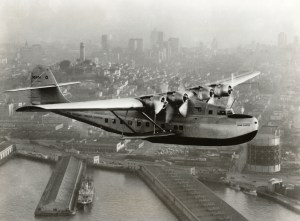






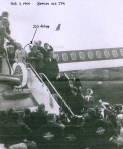

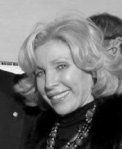


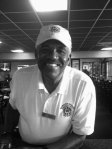
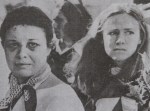








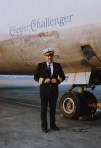
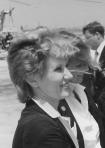

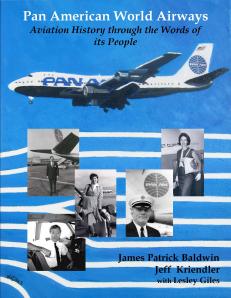
Recent Comments